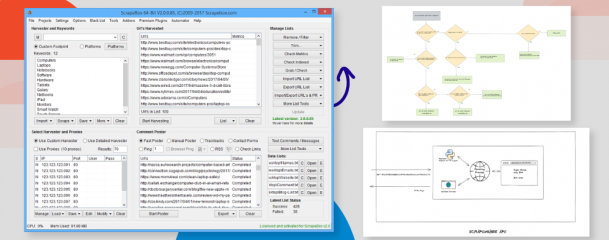1. Leverage Surveys and Questionnaires

To truly understand the remote working landscape in your industry, start by crafting well-designed surveys and questionnaires. These are your tools to gather valuable insights directly from your target audience. Develop questions that touch on various aspects of remote work, such as productivity, work-life balance, and preferred communication tools.
Make the surveys concise and engaging to encourage participation. You can use online survey platforms like SurveyMonkey or Google Forms to easily create and distribute your surveys. Don't forget to incentivize respondents with rewards or discounts to boost participation rates. Analyzing the data from these surveys will provide you with a solid foundation for understanding the prevailing trends in your industry.
2. Monitor Social Media and Online Forums
Social media platforms and online forums are treasure troves of information when it comes to remote working trends. Join relevant industry-specific groups, follow hashtags related to remote work, and participate in discussions. Pay attention to the challenges, solutions, and opinions shared by professionals in your field.
Use tools like social media monitoring software to track keywords and mentions related to remote work. This will help you stay updated on the latest developments and issues your industry peers are facing. Additionally, engage with your audience by sharing your own insights and experiences, fostering a mutually beneficial exchange of information.
3. Collaborate and Network
Networking is key to staying informed about remote working trends. Attend virtual industry events, webinars, and conferences dedicated to remote work and flexible working arrangements. Connect with professionals in your field on LinkedIn and participate in meaningful discussions.
Collaborate with colleagues and experts through online workshops or seminars. By actively engaging with your industry's remote work community, you'll gain access to firsthand knowledge, best practices, and emerging trends. Networking not only expands your knowledge base but also creates valuable connections that can lead to potential collaborations or job opportunities in the remote work sphere.
4. Use a Web Scraper

Rather than painstakingly poring through website after website to gain a sense of emerging trends, why not automate the process? You can extract website data using a web scraper!
Web scraping is a powerful technique for gathering data on remote working trends. With web scraping, you can automatically extract information from websites, news articles, and job listings related to your industry.
There are various web scraping tools and libraries available that make this process more accessible, even if you're not a coding expert. By scraping data from reputable sources and analyzing it, you can identify patterns, emerging job roles, and industry-specific challenges. Web scraping provides a quantitative approach to understanding remote work trends and can help you make data-driven decisions.
5. Collaborate with Remote Job Boards
Remote job boards like Remotewokr can serve as valuable sources of information regarding remote working trends. These platforms are hubs for professionals actively seeking remote opportunities, making them ideal places to gather insights.
Engage with remote job boards by regularly checking for job listings in your industry. Analyze the types of roles being offered, the skill sets in demand, and the compensation packages. This data can shed light on the remote work landscape, indicating which positions are becoming more remote-friendly and the competitive aspects of remote job markets.
Furthermore, job boards often host forums or communities where remote workers discuss their experiences and challenges. Participating in these discussions allows you to tap into the collective knowledge of remote workers, gaining deeper insights into the intricacies of remote work in your industry.
By collaborating with remote job boards, you can access a wealth of information and stay updated on the latest trends, helping you make informed decisions and navigate the evolving landscape of remote work within your industry.
6. Analyze Company Reports and Case Studies

To gain deeper insights into remote working trends specific to your industry, delve into company reports and case studies. Many organizations now publish detailed reports on their remote work experiences, strategies, and outcomes. These reports often contain valuable data on productivity, employee satisfaction, and the technologies employed to support remote work.
Search for case studies of companies in your industry that have successfully implemented remote work solutions. These studies can offer valuable real-world examples of best practices and challenges overcome. Analyzing these reports and case studies can help you identify trends, technologies, and strategies that have proven effective in your industry, providing you with actionable insights to adapt and excel in the remote work landscape.
By incorporating this additional tip into your data-gathering efforts, you'll have a comprehensive understanding of remote working trends in your industry, equipping you with the knowledge needed to make informed decisions and stay ahead of the curve.
Remote work is here to stay, and those who embrace and understand its trends will thrive in the new era of work. So, keep your finger on the pulse of your industry and be ready to pivot when necessary.
 Interested in Virtual Team Building Events?
Interested in Virtual Team Building Events?





















